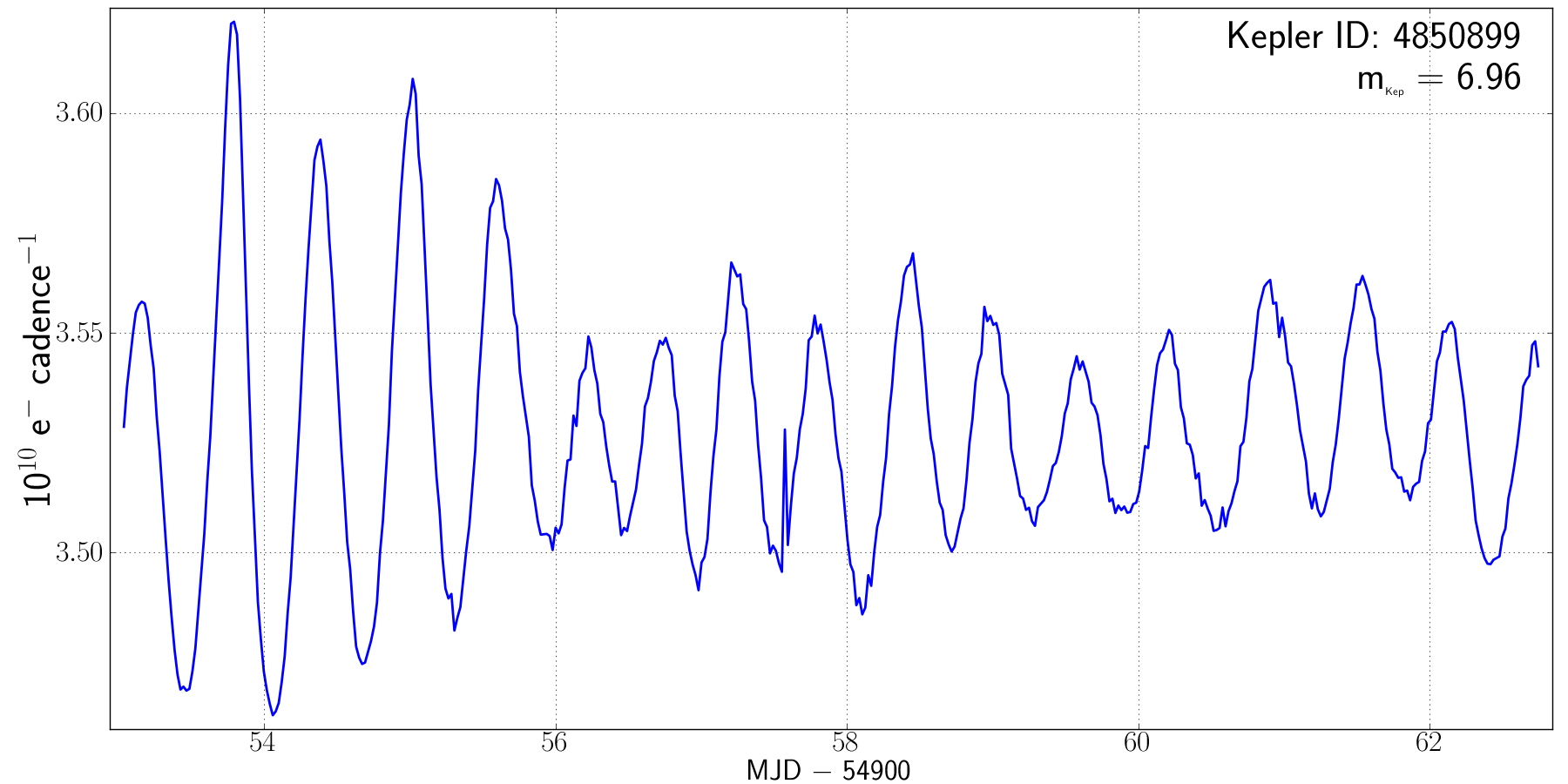|
|
|
||

| |||
| Kepler Dropped Targets | |
| +Kepler Data Archive | |
|
QUARTER 0 (Q0) PUBLIC DATA RELEASE |
Observing Period: May 2-11, 2009 |

|

|
|
Fig 1: Two light curves from the Q0 dropped target list. KepID 3102230 with mKep = 11.08 and g - r = 0.97 is likely to be a red giant. KepID 4850899 with mKep = 6.96 and g - r = 0.28 is HD 186505, classified as an F0 IV star. The Kepler mission announces the first public release of time series data collected by the Kepler spacecraft. Calibrated cadence data for individual sources can be obtained from the Multi-mission Archive at the Space Telescope Science Institute (MAST) via the Kepler Data Search and Retrieval form. The software pipeline at the Kepler Science Operations Center (SOC) and the instrument calibration are on-going projects, investigators are urged to read the Data Release Notes #2 in order to understand the accuracy and limits of this, and future, data releases. During the 10 day commissioning phase, designated Quarter 0 (Q0), the Kepler spacecraft observed 52,496 sources in order to exercise the capabilities of the science instrument. During this phase, the Project Team observed all bright stars 7.0 < mKep < 13.6 within the field of view in order to calibrate performance and define operational parameters for the following Science Mission. The exoplanet program began in Quarter 1 (Q1), spanning May 12 - Jun 18, 2009 with 145,161 targets. A sub-sample of Q0 sources did not make it into the Q1 target list because they do not meet the criteria for hosting detectable planets within habitable zones. A further, and smaller, subset of objects were dropped after Q1 based upon inspection of Q0 data. These are objects of mKep < 13.6 that reveal either red giant properties (these stars are not of interest to the exoplanet program) or reveal extended structure in full frame images. Combining Q0 and Q1, 8,441 sources have been dropped from the Kepler target list and the corresponding light curves for Q0 targets are now available for public download. This number will increase as further targets are dropped by the program in future quarters. All of the Q0 photometry made public on Nov 2, 2009 was obtained with 30 minute cadence between May 2-11, 2009. Users of this data should be aware that future re-deliveries of the data for these sources will increase in accuracy and value as calibration algorithms continue to develop with operational knowledge. These data, and future dropped targets, present a treasure trove of unique information in the form of quasi-continuous optical photometry across a range of astrophysically interesting objects. Dropped targets observed during Q1 of the Kepler mission are intended for public release on Nov 23, 2009. A schedule for the release of future dropped targets is available here. Potential Guest Observers can use this large set of time series data to inform future proposals, with the Cycle 2 proposal deadline of Jan 15, 2010 approaching. All dropped targets can be proposed for further observation in future Guest Observer cycles. Interested parties are strongly encouraged to inspect the Kepler light curves and consider Guest Observer proposals. New users of the MAST archive are requested to register before downloading data. Please direct questions concerning the Q0 public data to the . |
|
|
BROWSE Q0 DROPPED TARGETS
|
|
|
QUICK LINKS
|
|
Questions concerning Kepler's science opportunities and open programs, public archive or community tools? Contact us via the email address.